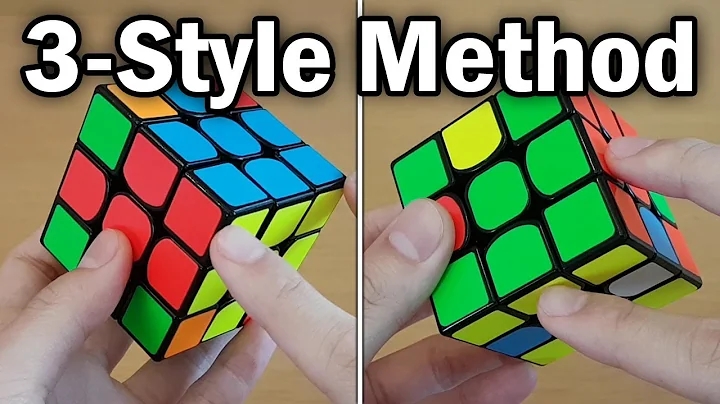The 3-Style method is an advanced technique for solving the 3×3 Rubik’s Cube blindfolded (3BLD). It involves using three distinct algorithms or “styles” to efficiently solve the corners, edges, and orientations of the cube. This method requires a strong foundation in blindfolded solving and familiarity with advanced cube notation. Below is a tutorial on how to approach the 3×3 Blindfolded (3BLD) using the 3-Style method:
Prerequisites
Before attempting the 3-Style method for 3×3 Blindfolded solving, ensure you have the following skills and knowledge:
- Proficiency in solving the 3×3 Rubik’s Cube using standard methods.
- Understanding of advanced cube notation, including letter pairs for edge and corner targets.
- Familiarity with memorization techniques and execution strategies for blindfolded cubing.
Steps to Solve using 3-Style Method (3BLD)
1. Memorization Phase
- Lettering Scheme:
- Assign letters to each sticker position on the cube using a consistent lettering scheme for corners and edges. Use letter pairs (e.g., UF for the edge between the Up and Front faces) to represent targets.
- Memorize Cube State:
- Inspect the cube and memorize the current state of corners and edges using your lettering scheme.
- Note down the target positions and orientations of each piece relative to a solved state.
2. Execution Phase
- Blindfold Yourself:
- Put on your blindfold or close your eyes to start the solving process.
- Execute 3-Style Algorithms:
- Use three distinct algorithm sets to solve corners, edges, and orientations:
- Corner Algorithms (3-Style):
- Memorize and execute algorithms to solve the corners using specific letter pairs.
- Each algorithm should permute and orient multiple corners simultaneously.
- Edge Permutation (3-Style):
- Use algorithms to swap pairs of edges while preserving other edges.
- Memorize algorithms for different edge swap cases based on letter pairs.
- Edge Orientation (3-Style):
- Execute algorithms to orient the edges correctly without affecting their positions.
- Memorize algorithms for flipping edge orientations based on letter pairs.
- Follow Execution Plan:
- Execute the algorithms based on the memorized targets without looking at the cube.
- Focus on precise finger movements and algorithm execution under blindfold.
3. Verification Phase
- Remove Blindfold:
- Once you believe the cube is solved, remove your blindfold or open your eyes.
- Verify Cube State:
- Check the cube visually to ensure that all pieces are correctly solved according to your memorization.
Tips for Success
- Practice Algs and Execution: Master the 3-Style algorithms for corners, edges, and orientations through consistent practice.
- Use Memorization Techniques: Develop effective memorization strategies such as visualizing letter pairs and associating them with specific cube states.
- Start Slowly and Build Confidence: Begin with simpler cases and gradually increase the complexity of blindfolded solves using the 3-Style method.
- Seek Guidance: Get feedback from experienced blindfolded cubers and participate in blindfolded solving communities to improve your skills.
By following this tutorial and practicing regularly, you can develop proficiency in solving the 3×3 Rubik’s Cube blindfolded using the 3-Style method (3BLD). Remember that blindfolded cubing requires dedication, patience, and precision to achieve consistent success. Good luck with your blindfolded solving journey!
